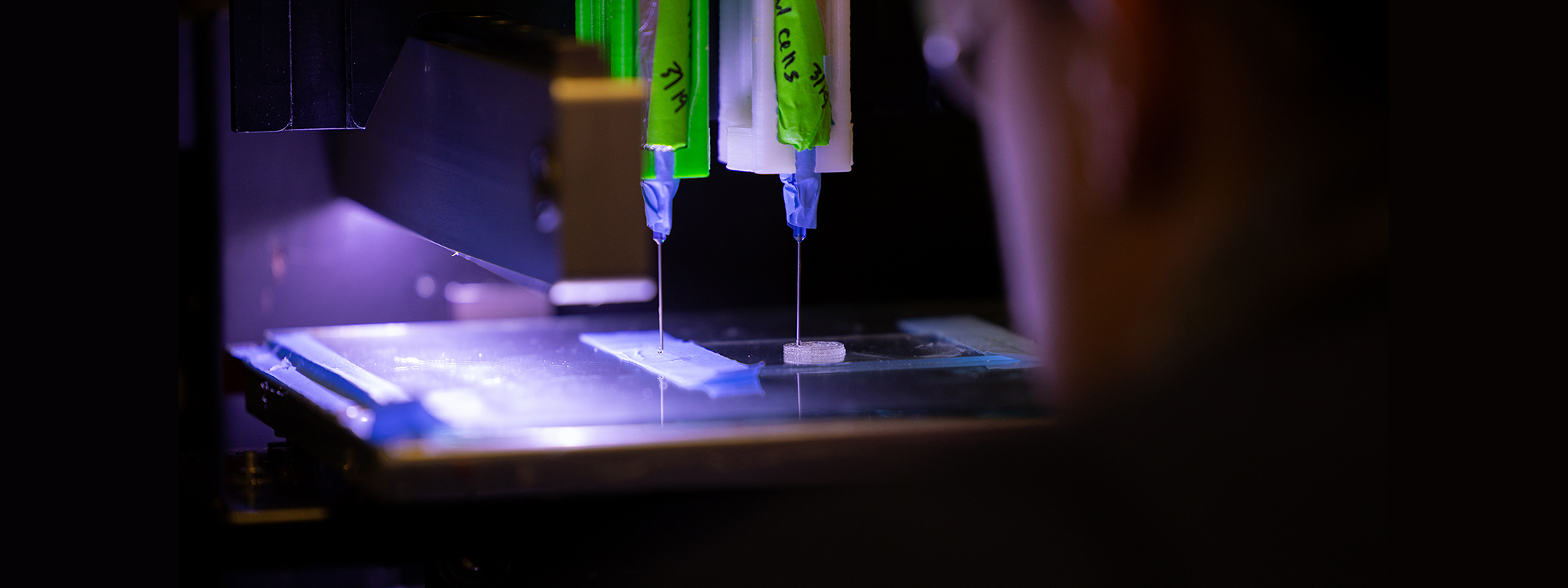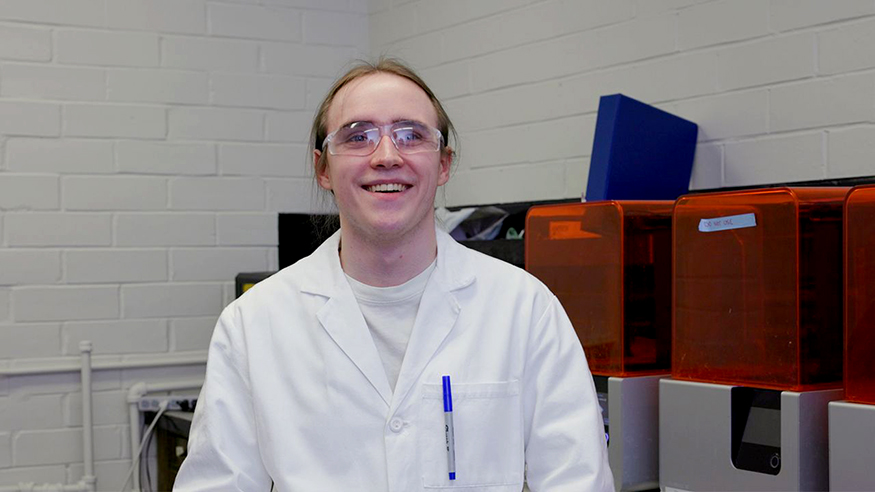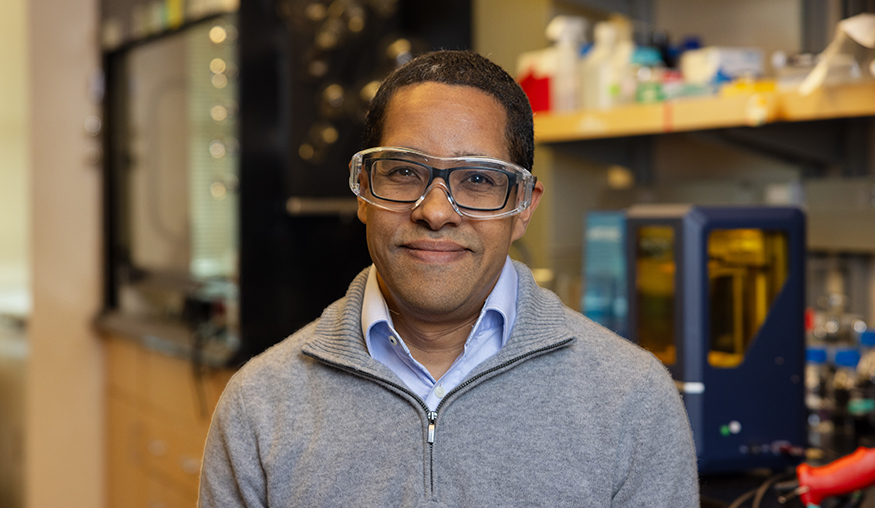
Imagine a building material that becomes stronger when stress is applied. Imagine being able to produce medications on demand, anywhere, with a 3D printer. Imagine biodegradable plastics with the same durability — but more adaptability — than their petroleum-based counterparts.
Alshakim Nelson, UW professor of chemistry and Nist Faculty Fellow, can imagine all of it. Nelson’s research team develops innovative materials using 3D-printing technology, with potential real-world applications in medicine, engineering, and other areas.
While researchers in other fields develop 3D printer hardware and software, Nelson’s team focuses on the material being used for printing, with sustainability as a priority. Finding no commercially available materials that were suitable, they began creating their own.
“We needed a material that was 3D printable and biodegradable but also had good mechanical properties,” he says. “It had to be competitive with the commercial plastics [for 3D printing] that are out there today.”
It’s just another opportunity for us to use our imaginations about what’s possible now — and what’s next.
By pairing the bioplastics they develop with innovative 3D printing methods, Nelson’s team has created new materials with exciting — and sometimes unexpected — properties.
“It feels like cooking, except the ingredients are limitless, and the kinds of things you can make are also limitless,” is how Angus Berg, an undergraduate student working in Nelson’s lab (see video below), describes the research.
Stronger When Stressed
Nelson joined the UW College of Arts & Sciences in 2015, after a decade as a researcher at IBM. Intrigued by the possibility of 3D printing with bio-organisms, he hoped to collaborate with colleagues across campus who were also venturing into 3D printing. His second day on campus, a mechanical engineering professor visited him and offered a 3D printer the professor had built in his lab.
Many years and printers later, Nelson collaborates with colleagues in chemical engineering, mechanical engineering, and bioengineering in the UW College of Engineering, as well as researchers at the UW School of Medicine, the University of Texas at Austin, and New York’s Mount Sinai. His own 18-member research team in the Department of Chemistry includes graduate students, undergraduate students, and postdoctoral fellows.
With a focus on sustainability, Nelson’s lab explores the potential of proteins as a raw material for 3D printing. “Proteins are biodegradable and can be bio-sourced, so we wanted to see if we could fit them into the 3D-printing lifecycle,” says Nelson. “Then we wanted to see if we could shape them and create more complex designs [through 3D printing] that would still biodegrade at the end of the lifecycle.”
The team discovered they could do all those things, which has led to more questions and possibilities.
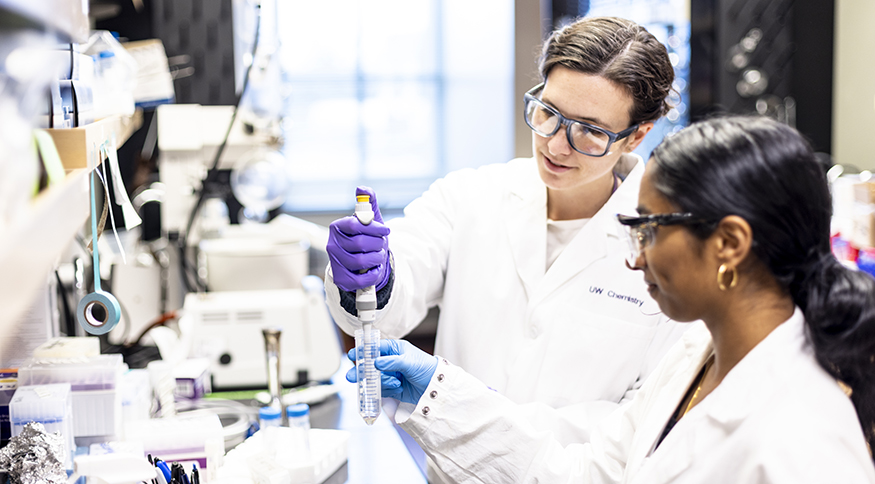
One recent example is a bioplastic that, when 3D printed and compressed, will deform as expected but then return to its original shape — this time stiffer and stronger than before — thanks to an intricate lattice design used in the 3D printing process. The design, developed in collaboration with Lucas Meza, UW professor of mechanical engineering, enables the 3D-printed material to distribute energy more effectively when force is applied, so cracks don’t develop and weaken the material. Students in Nelson’s lab were the first to observe that the material actually grew stronger and stiffer in response to force.
“I have a really great team of students and postdocs who make excellent observations,” Nelson says. “They’re just being good scientists, noticing when something interesting happens [in an experiment] and should be looked into more.”
The team’s exploration of self-strengthening materials is ongoing and could be a potential game-changer in applications from manufacturing to construction to health care.
To Space and Beyond?
Other research in the Nelson lab is equally promising, such as their development of 3D-printed materials that incorporate therapeutic compounds as part of their structure, for use in medical treatments. Nelson offers the example of a 3D-printed stent that — thanks to microorganisms in the material — continuously produces anti-inflammatory agents while inside the body.
“One of the cool things we’ve discovered is that these materials stay viable for extended periods of time,” says Nelson. “They can continuously produce the desired compounds for a year or longer. They’re also shelf-stable in a dried state for six months. That means we can store them until we need them and then take them off the shelf and put them into media and start producing very quickly. The big dream is to think about using these for manufacturing on a more local scale and maybe in smaller volumes as needed.”
In this video, UW chemistry major Angus Berg answers a few questions about working in Professor Al Nelson's chemistry lab as an undergraduate. Video by Juan Rodriguez.
Looking to the future — and skyward — Nelson sees the potential for NASA to use this approach for therapeutics in space, using cells that produce things like penicillin or even anti-tumor agents.
“If you think about a mission to Mars that takes almost two years, you have to take everything with you,” Nelson says. “Could we use these types of printable structures for the on-demand production of different therapeutic compounds? Could this kind of bioproduction be done in space? I think it is possible."
That might be a lofty goal, but Nelson has many other goals closer to home, including the potential for using proteins from plants instead of animal proteins as a more sustainable biodegradable resource for 3D printing in the future.
“We recently found that we can print with a protein from genetically engineered rice,” Nelson says. “It has good properties and can also provide new functions, so I’m excited about that. It’s just another opportunity for us to use our imaginations about what’s possible now — and what’s next.”
More Stories
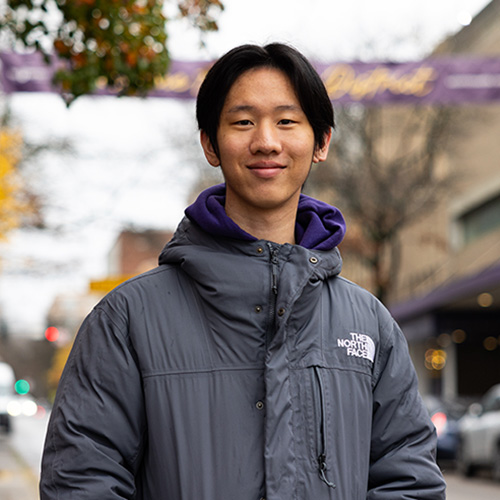
The Public Impact of Private Cities
Geography major Edwin Bai has researched private cities, developed by individuals and corporations, that "take the libertarian idea of low government regulation to the maximum."

A "gesture" to jump-start careers
To prepare students for professional success, the UW College of Arts and Sciences offers “gesture,” a mock startup company where student interns gain skills that employers seek.
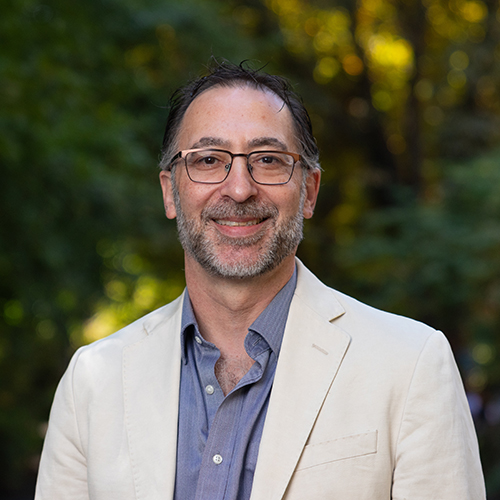
The Curious Journey of Chinese Characters
Several Asian countries adapted the Chinese writing system—the oldest writing system still in use—for their own languages. In a new book, Professor Zev Handel shares how that happened.
